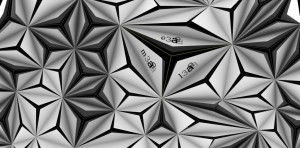A summary and critical analysis of the written text ‘Parametricism: A New Global Style for Architecture and Design’ by Patrick Schumacher.
A style in architecture usually emerges from the history of a society. Most architecture can be categorized as styles with chronological influences, which change and adapt over time as fashion trends or emergences of new ideas evolve. A style will also materialise from new technology, successful exploration of innovative materials and social complexities that are influenced by people’s beliefs, religion, needs, ways of living, tendencies and emotions.
Patrick Schumacher claims parametricism as a ‘new global style’ in architecture. He defines it as the succession to a modernist transitional period of uncertainty with its new long wave of systematic innovation. A new movement with radical ambitions and values is suggested to address a current societal demand, that is the mass heterogeneous society, via the employment of new digital techniques; such as animation, simulation, form finding tools, scripting and parametric modelling. Thus claiming to introduce mass customization and continuous differentiation in design. This is all to be achieved through computationally advanced design techniques combined with five agendas that push parametricism further.
- parametric Inter-articulation of sub-systems, interactions between various sub-systems such as the envelope, structure etc.
- Parametric accentuation of differentiation, and the merging through organic integration.
- Parametric figuration, which allows for complex configurations with multiple readings to have different variables.
- Parametric responsiveness, which enables an environment to change and adapt in response to prevalent occupation patterns.
- Parametric urbanism, where the morphology of both the building and the urban fabric are completely integrated.
The article challenges the Modernist movement with its Euclidian geometry and limitations upon order, and suggests that the understanding of nature’s complex order was limited by the science of those days. Now, in the current day, both the complexity theory and the research of Frei Otto has taught to recognise, measure and simulate complex patterns that emerge from processes of self-organisation. Schumacher claims that parametricism reproduces the organic networks of nature.
After reading this article, doubts on whether parametricism can be claimed a style arise. To avoid possible debate Schumacher introduces this new proclaimed style as a research programme, which immediately suggests a ‘work in progress’ and a process that is not fully resolved. He argues that parametricism, with ambition and values, addresses and integrates societal complexities and mass customisation, yet the only clear explanations that are expressed are on how the buildings and space within can morph. There is no clear indication on how the parametric tools will influence social integration, but if the tools were capable of being influenced by the complexities of society itself, then integration might be achievable. The philosophy of a style would usually relate a human being with society and space, yet Schumacher does not touch base with these concerns in his article. In terms of innovative use of materials, the only visible materials used in their displayed built projects are non flexible and would restrict any morphing of a structure. At no point is there any explanation on new, innovative materials that would allow for change. Another important considerable fact is how history of a city influences a style in architecture; parametricism does not build onto any chronological order that has been built up through time but rather erases everything that existed before it. There is no more new land to be built on unless we tackle the in-between spaces within cities. This radical approach of parametricism in an urban scale is therefore an unrefined answer to improving societal complexities but maybe implementing it parasitically within built cities would allow a more achievable and positive outcome.
This article has helped in creating a better understanding on what could be a solution to addressing the complexities of the mass heterogeneous society. By the notion of applying the digital techniques of parametric design within a concept of urban parasitism, where adapting new morphological forms in and onto existing built fabric become a core strategy.
References
http://www.lem3a.es/index-en.php
http://en.wikipedia.org/wiki/Modern_architecture
http://en.wikipedia.org/wiki/Architectural_style

